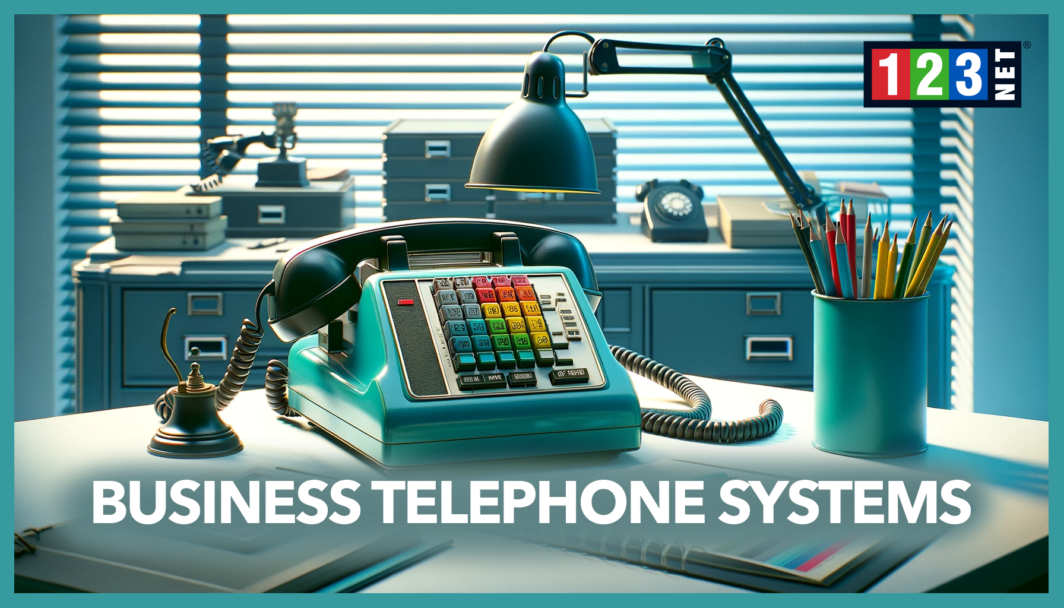
In today’s dynamic business landscape, efficient and reliable communication systems are critical. Serving as the core of corporate communication networks, business telephone systems have transformed from traditional landlines to advanced digital solutions. It is reflecting the wider digital transformation across industries. This shift highlights the evolving nature of business communications, driven by technological advancements and the need for enhanced connectivity. This article delves into the progression, various types, and crucial considerations of business telephone systems. Underscoring their importance for businesses aiming to refine their communication strategies and infrastructure. Through understanding these systems’ development and capabilities, businesses can better navigate the choices available to them. It is ensuring their communication setup is both effective and future-proof.
Evolution of Business Telephone Systems
The evolution of business telephone systems reflects the swift progress in technology. This is marking a transition from the era of traditional landlines to the digital age. Initially, businesses relied on analog systems for communication, which were efficient for their time. However, limited by the constraints of physical infrastructure. The introduction of the internet and digital technologies ignited a transformative shift. Leading to the development of Voice over Internet Protocol (VoIP) technology. This significant leap forward offered businesses unprecedented flexibility, scalability, and cost-efficiency, revolutionizing the way corporate communication is conducted. VoIP technology, not only enhanced the quality and reliability of interactions but also facilitated the seamless integration of telecommunication systems. This integration has been a cornerstone of the digital transformation in the business communication sector. It is highlighting how advancements in technology can redefine and optimize corporate communication strategies. The journey from analog to digital telephony underscores the importance of innovation in meeting the evolving needs of businesses. It is ensuring they remain competitive and connected in the global marketplace.
Types of Business Telephone Systems
Traditional Landline Telephone Systems
The landscape of business communication has undergone profound changes, moving from traditional models to more flexible, modern solutions. Traditional landline telephone systems, once the backbone of corporate communication, rely on the Public Switched Telephone Network (PSTN). Renowned for their reliability and straightforward operation, these systems, however, fall short in meeting the dynamic needs of contemporary businesses. This is due to their lack of flexibility and scalability. Moreover, the inherent costs associated with maintaining the physical infrastructure of landlines can be prohibitive.
Voice over Internet Protocol
Enter VoIP (Voice over Internet Protocol) systems, which harness the power of the internet to facilitate voice communications. VoIP represents a significant departure from traditional telephony, offering businesses substantial cost savings, enhanced scalability, and the capacity to integrate seamlessly with various business applications. This integration capability extends the utility of communication systems into the realm of digital business operations. Nonetheless, the performance of VoIP systems is closely linked to internet connectivity quality. Which is underscoring a dependency on stable and robust internet service.
Virtual Phone Systems
Further expanding the horizon of business communication are virtual phone systems, which elevate flexibility and mobility to new heights. These systems enable call forwarding to mobile phones or computers, allowing businesses to project a professional image without being anchored to a specific physical location. This blend of convenience and professionalism makes virtual phone systems an attractive option for businesses looking to optimize their communication strategy.
On-premises and Cloud-Based Systems
The decision between on-premises and cloud-based systems introduces another layer of consideration. On-premises solutions offer businesses a high degree of control and customization, albeit with substantial initial investments and maintenance demands. On the other hand, cloud-based telephony champions flexibility and scalability, significantly reducing upfront costs. As well as shifting the burden of maintenance and upgrades off-site. This dichotomy between on-premises and cloud-based options highlights the evolving nature of business communication technologies. As companies seek solutions that best align with their operational needs and strategic objectives. In navigating these choices, businesses are guided by the dual objectives of efficiency and adaptability. It is ensuring their communication infrastructure supports broader operational goals and adapts to the fast-paced digital economy.

Features to Consider When Choosing a Business Telephone System
Choosing the optimal business telephone system is a complex decision, shaped by various critical features and operational requirements. The functionality of these systems extends beyond mere voice communication. It is encompassing advanced features like call forwarding, waiting, and routing, which ensure that every call reaches the right person or department. Voicemail to email transcription converts voice messages into text, delivering them directly to your email, thereby enhancing accessibility and efficiency. Moreover, the capability for conference calling is indispensable for businesses aiming to facilitate collaborative discussions without the constraints of geographical boundaries. Another pivotal feature is the auto-attendant coupled with Interactive Voice Response (IVR) systems, which streamline call management by directing callers to the appropriate department through voice prompts, significantly improving the customer experience.
Customer Relationship Management
The integration of telephone systems with other business tools, such as Customer Relationship Management (CRM) platforms, amplifies their utility. This synergy between communication systems and business software creates a cohesive ecosystem, enabling businesses to offer a more personalized service experience, track customer interactions more effectively, and ultimately, make data-driven decisions.
Cost Considerations
When it comes to cost considerations, the landscape is diverse, with the pricing of business telephone systems influencing by the type of technology chosen—be it traditional, VoIP, or cloud-based. Initial setup costs, recurring monthly or annual service fees, and the potential expenses associating with upgrades and the addition of new features have to be consider carefully. Businesses must juxtapose these costs against the benefits provided by each system to determine which offers the best value for their specific needs.
Installation and Configuration
The process of installing a new business telephone system is multi-facet, involving the selection of suitable technology and a provider, following by the installation of necessary hardware and software configuration. This initial setup phase is critical in laying the foundation for a robust communication network. However, the responsibility does not end with installation; ongoing maintenance is crucial for sustaining system reliability and performance. Businesses must ensure they have access to adept technical support and maintenance services to address any issues promptly, minimize downtime, and keep their systems updated with the latest features and security measures.
In conclusion, the selection of a business telephone system requires a holistic view of the organization’s communication needs, considering both the immediate and long-term impacts on operational efficiency and customer satisfaction. By carefully evaluating the features, costs, and maintenance requirements of different systems, businesses can secure a telecommunications solution that not only meets their current needs but also scales with their growth, ensuring a future-proof investment in their communication infrastructure.
FAQs Section
- What is the best telephone system for a small business? A: The best system depends on the specific needs and resources of the business. VoIP and cloud-based systems are often prefer for their scalability, cost-efficiency, and flexibility.
- How does VoIP technology work? A: VoIP technology converts voice into digital signals that are transmitted over the internet, allowing for calls to be made from computers, VoIP phones, or other data-driven devices.
- Can business telephone systems integrate with CRM software? A: Yes, many modern business telephone systems offer integration capabilities with CRM software, enabling enhanced customer service and streamlined operations.
- What are the main differences between on-premises and cloud-based systems? A: On-premises systems are host within the business’s physical location, offering control but requiring significant investment and maintenance. Cloud-based systems can be host off-site by the provider, offering scalability and lower upfront costs.
In conclusion, the landscape of business telephone systems is vast and varied, offering solutions that cater to the diverse needs of modern businesses. From traditional landlines to advanced VoIP and cloud-based systems, the choice of the right system is pivotal for ensuring effective and efficient business communication. By considering the types, features, costs, and maintenance requirements of these systems, businesses can harness the power of telecommunication to drive their operations forward in the digital age.





